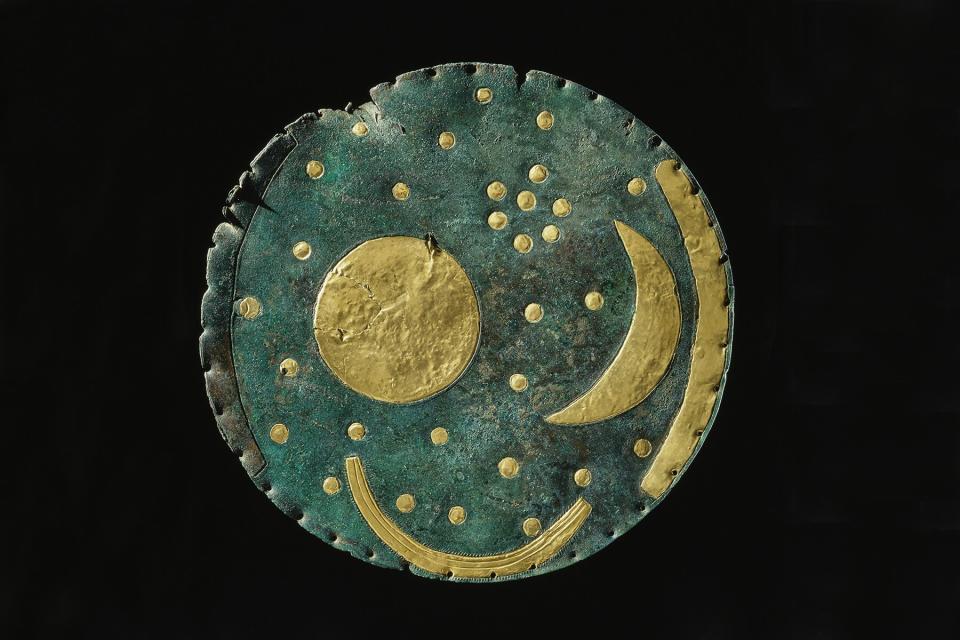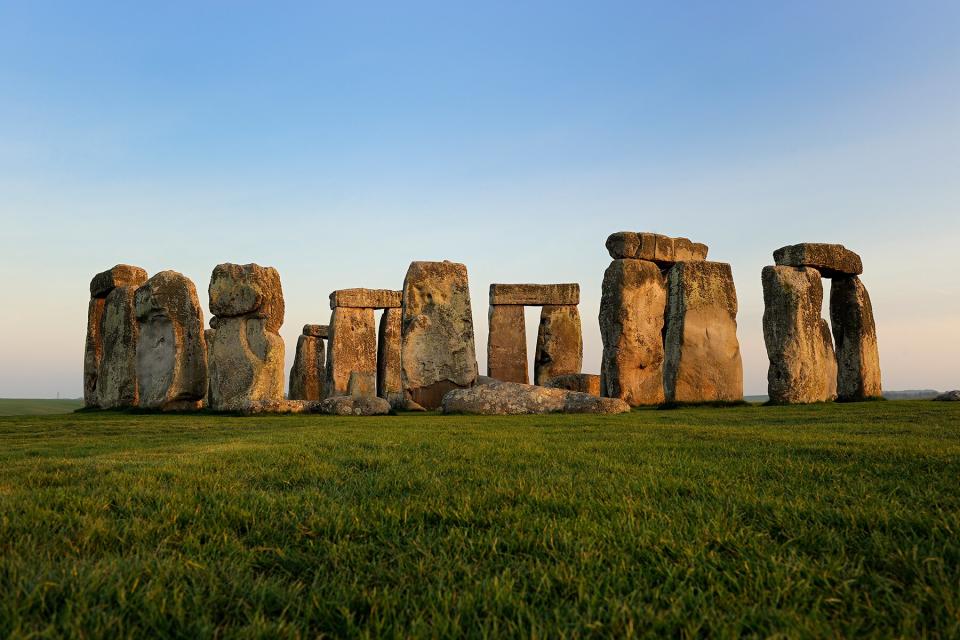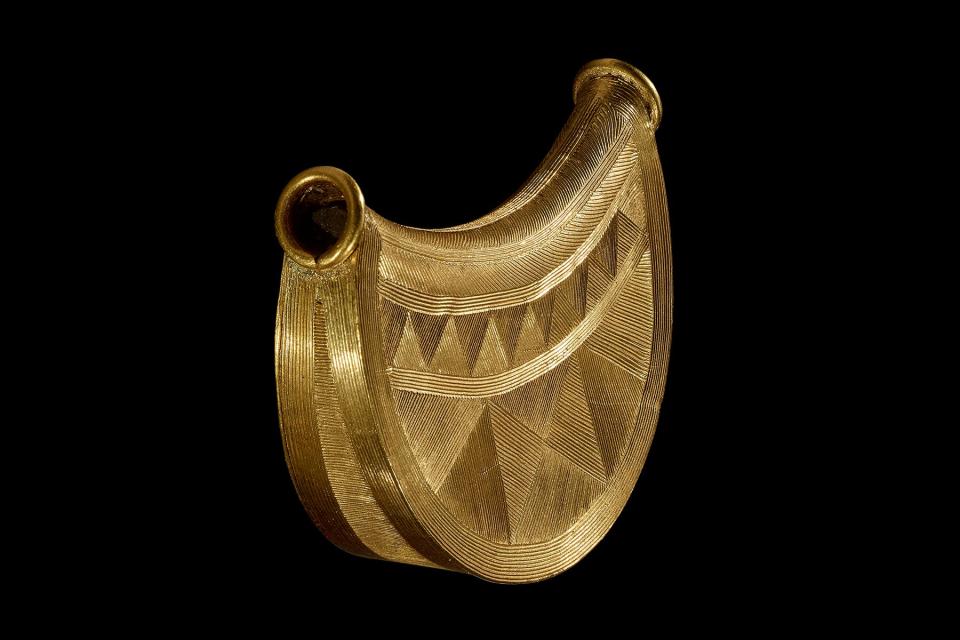The World's Oldest Map of Stars Is Going on Display in London
The oldest known surviving astronomical map ever found — a map of the stars that dates back more than 3,600 years — will go on display at London's British Museum in 2022.
The "Nebra Sky Disc" was found in Germany in 1999 and is considered to be the oldest known surviving depiction of the cosmos ever uncovered.
Historians believe the disc dates back to about 1600 B.C. The 12-inch bronze disc has a blue-green patina and is decorated with gold inlaid symbols, thought to represent the sun, moon, and stars.

Courtesy of “LDA Sachsen-Anhalt, Juraj Lipták Nebra sky disc, Germany, about 1600 BC
The disc will be included in the British Museum's "World of Stonehenge" exhibit, planned to open in February 2022. It is the first time the disc has traveled outside of Germany in 15 years.

Courtesy of English Heritage
The exhibit will unpack the mysteries of Stonehenge, depicting how Britain and Ireland were breeding grounds of new ideas thousands of years ago with hundreds of artefacts from across Britain and Europe. The exhibit also features a rare 3,000-year-old sun pendant that the museum says is one of the most significant pieces of Bronze Age gold ever found in Britain.
"The Nebra Sky Disc and the sun pendant are two of the most remarkable surviving objects from Bronze Age Europe," Neil Wilkin, the exhibition's curator, told the Associated Press. "While both were found hundreds of miles from Stonehenge, we'll be using them to shine a light on the vast interconnected world that existed around the ancient monument, spanning Britain, Ireland and mainland Europe. It's going to be eye-opening."

Courtesy of The Trustees of the British Museum Bronze Age sun pendant, 1000 – 800BC
Visitors to the museum will also learn about the mythology and cosmology that surrounds Britain's most famous landmark.
The exhibition will run from Feb.17 to July 17, 2022.
Also on the British Museum's roster for 2022 are exhibitions about the history of feminine power, Egypt's hieroglyphs, and the work of 19th-century Japanese artist Katsushika Hokusai.
Cailey Rizzo is a contributing writer for Travel + Leisure, currently based in Brooklyn. You can find her on Twitter, Instagram, or at caileyrizzo.com.

